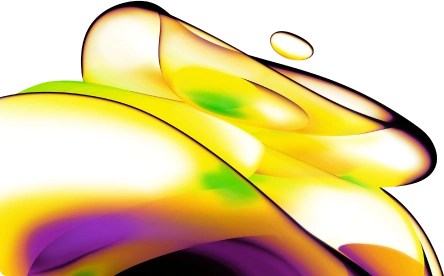

AlphaLISA Mouse IgM Detection Kit, 100 Assay Points
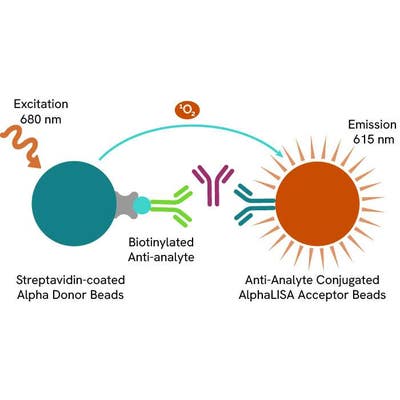

 View All
View All
AlphaLISA Mouse IgM Detection Kit, 100 Assay Points
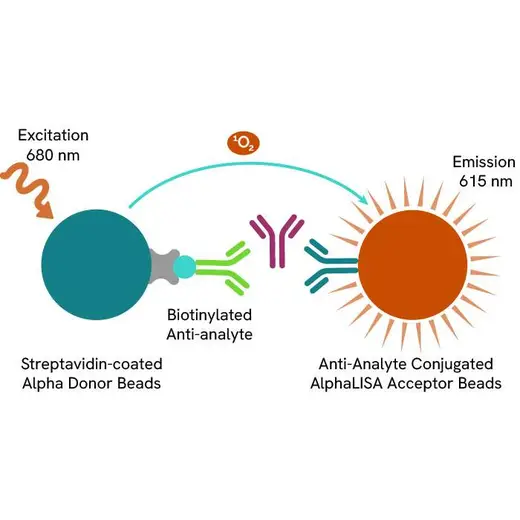




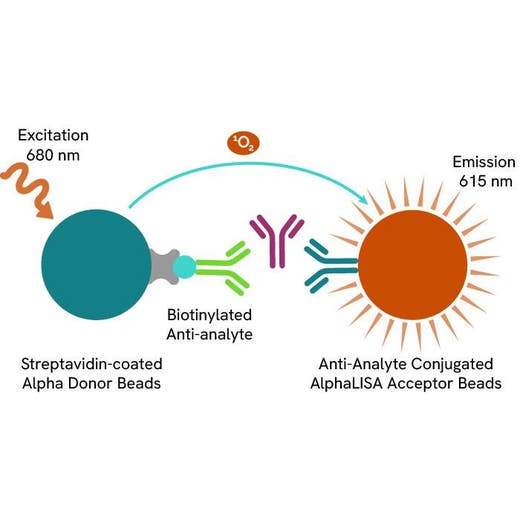




| Feature | Specification |
|---|---|
| Application | Protein Quantification |
| Dynamic Range | 104 - 1,000,000 pg/mL |
| Limit of Detection | 104 ± 58 pg/mL |
| Limit of Quantification | 365 pg/mL |
| Sample Volume | 10 µL |















Loading...
Product information
Overview
Formats:
- Our HV (100 assay point) kits allow you to run 100 wells in 96-well format, using a 100 µL reaction volume (10 µL of sample).
- Our 500 assay point kit allows you to run 500 wells in 96-well or 384-well format, using a 50 µL reaction volume (5 µL of sample).
- Our 5,000 assay point kit allows you to run 5,000 wells in 96-well or 384-well format, using a 50 µL reaction volume (5 µL of sample).
Features:
- No-wash steps, no separation steps
- ELISA alternative technology
- Sensitive detection
- Broad sample compatibility
- Small sample volume
- Results in less than 3 hours
- Half the time of an ELISA assay
There are five classes of mammalian immunoglobulins: IgA, IgD, IgE, IgM, and IgG. IgG is the most abundant immunoglobulin and is equally distributed in blood and tissue. In mice, the IgG class is further divided into four subclasses: IgG1, IgG2a/ IgG2c (strain specific), IgG2b, and IgG3. Serum IgM exists as a pentamer in mammals, predominates in primary immune responses to most antigens, is the most efficient complement fixing immunoglobulin and comprises approximately 10% of normal human serum Ig content. Each of the five monomers is composed of two light chains (either kappa or lambda) and two heavy chains. IgM can cause cell agglutination as a result of recognition of epitopes on invading microorganisms. This antibody-antigen immune complex is then destroyed by complement fixation or receptor mediated endocytosis by macrophages. Typically mouse serum and plasma samples contain about 0.5 to 6.5 mg/mL of IgM. The present kit permits detection of mouse IgM (i.e. analyte) in different sample matrices, including different cell culture media and monkey serum.
AlphaLISA technology allows the detection of molecules of interest in a no-wash, highly sensitive, quantitative assay. In an AlphaLISA assay, a biotinylated anti-analyte antibody binds to the Streptavidin-coated Donor beads while another anti-analyte antibody is conjugated to AlphaLISA Acceptor beads. In the presence of the analyte, the beads come into close proximity. The excitation of the Donor beads causes the release of singlet oxygen molecules that triggers a cascade of energy transfer in the Acceptor beads, resulting in a sharp peak of light emission at 615 nm.
How it works
Principle of the AlphaLISA assay
The AlphaLISA assay is based on an AlphaLISA sandwich immunoassay involving a biotinylated anti-analyte antibody bound to Streptavidin-coated AlphaLISA Donor beads and an anti-analyte antibody conjugated to AlphaLISA Acceptor beads. Both antibodies are directed against the analyte of interest. In the presence of the target, both antibodies bind to analyte and the beads come into proximity. The excitation of the Donor beads provokes the release of singlet oxygen molecules that triggers a cascade of energy transfer within the Acceptor beads, resulting in emission with λmax at 615 nm. The intensity of the signal is directly proportional to the concentration of analyte present in the sample.

Protocol of the AlphaLISA assay
The AlphaLISA assay can be run in a 96- or 384-well detection plate (50 µL final). As described here, samples or standards are dispensed directly into the assay plate for the detection of the analyte of interest by AlphaLISA reagents. No washing steps are needed. The protocol can be further miniaturized or upscaled by simply resizing each addition volume proportionally.
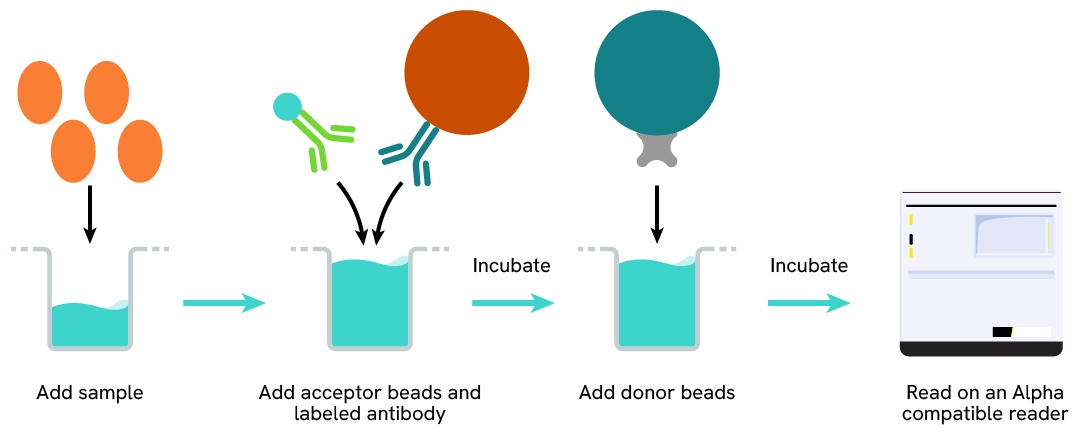
Specifications
| Application |
Protein Quantification
|
|---|---|
| Automation Compatible |
Yes
|
| Brand |
AlphaLISA
|
| Detection Modality |
Alpha
|
| Dynamic Range |
104 - 1,000,000 pg/mL
|
| Limit of Detection |
104 ± 58 pg/mL
|
| Limit of Quantification |
365 pg/mL
|
| Product Group |
Kit
|
| Sample Volume |
10 µL
|
| Shipping Conditions |
Shipped in Blue Ice
|
| Target |
IgM
|
| Target Class |
Biologics
|
| Target Species |
Mouse
|
| Technology |
Alpha
|
| Unit Size |
100 assay points
|
Video gallery
Loading...


How can we help you?
We are here to answer your questions.
